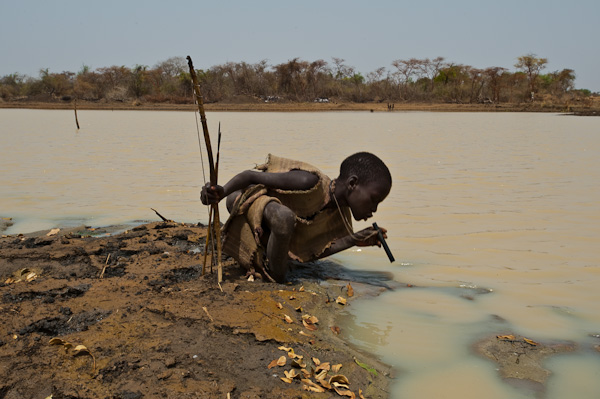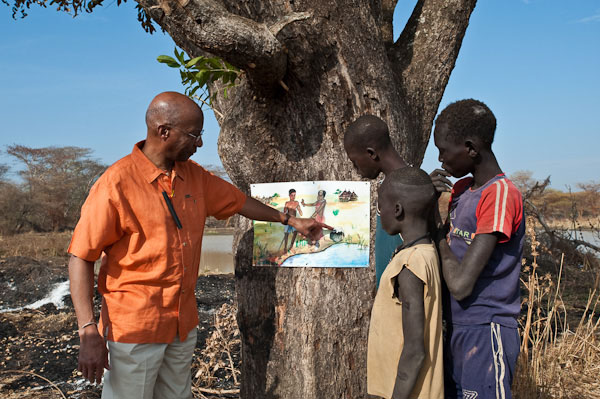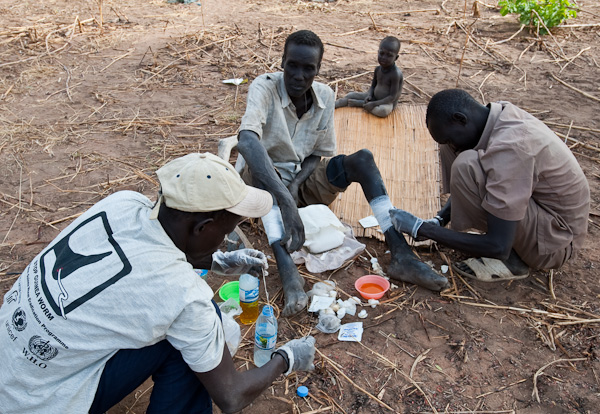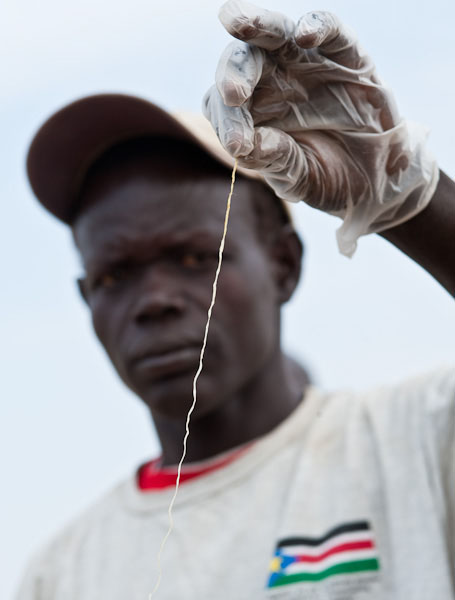Former U.S. President Jimmy Carter and his wife, Rosalynn, are in Sudan—the world’s most Guinea worm-endemic country—to personally appeal for completing eradication of the crippling waterborne parasite as soon as possible and to urge peace and stability in the nation as it prepares for its first multi-party elections in 24 years in April, which the Carter Center’s international election observation team will monitor. Read the feature >
The photos below were taken Feb. 9, 2010, during a Carter Center delegation visit to one of the world’s most Guinea worm-endemic communities: Terekeka County, Southern Sudan.

ALL PHOTOS: THE CARTER CENTER/LOUISE GUBB
A young goat herder in Kuse Dam uses a pipe filter provided by The Carter Center to strain out the infective Guinea worm larvae from the water he drinks. More than 9 million of these simple tools have been distributed for nomadic people who often travel from water source to water source.

At an unsafe water source, Carter Center Health Programs Vice President Dr. Donald R. Hopkins and Mandari children examine a poster that teaches the community to prevent those with Guinea worm from cooling their wounds in the local water source, since it will spread the disease. Without a vaccine or medical treatment for Guinea worm, health education has been a critical component of the international eradication campaign, which has been spearheaded by The Carter Center since 1986. Today, with worldwide cases reduced by more than 99 percent and remaining in only four remaining endemic countries (Sudan, Ghana, Ethiopia, and Mali), Guinea worm disease is poised to become only the second disease after smallpox to be eradicated.

Yari Villager Dario Mere receives treatment for his Guinea worm wounds from Assistant Supervisor James Laki (left) and village volunteer Santino. Mere suffered a worm emerging from both his right and his left shins during the course of one week. A widower whose children have grown up and moved away, Mere worries about who will care for his cattle while he is incapacitated with the waterborne parasite. The Southern Sudan Guinea Worm Eradication Program (SSGWEP) of the Government of Southern Sudan Ministry of Health, with support from The Carter Center, has reduced the incidence of Guinea worm disease in Southern Sudan—one of the world’s most endemic regions and where Mere lives—from 118,578 cases in 1996 to a provisional total of 2,753 cases reported in 2009 - a 98 percent decrease.

James Laki, an area supervisor for the Southern Sudan Guinea Worm Eradication Program, holds up a worm he has just removed from the leg of farmer Dario Mere. The worms, which can grow in the body for about one year, emerge slowly and painfully from a blister in the skin and can be as long as 1 meter. Patients with Guinea worm disease may suffer from multiple worms that can emerge from any part of the body. The treatment for a Guinea worm is the same as it has been for thousands of years. The worm must be carefully wrapped around a piece of gauze or stick, inch by inch, over several weeks until it is removed.
Please sign up below for important news about the work of The Carter Center and special event invitations.